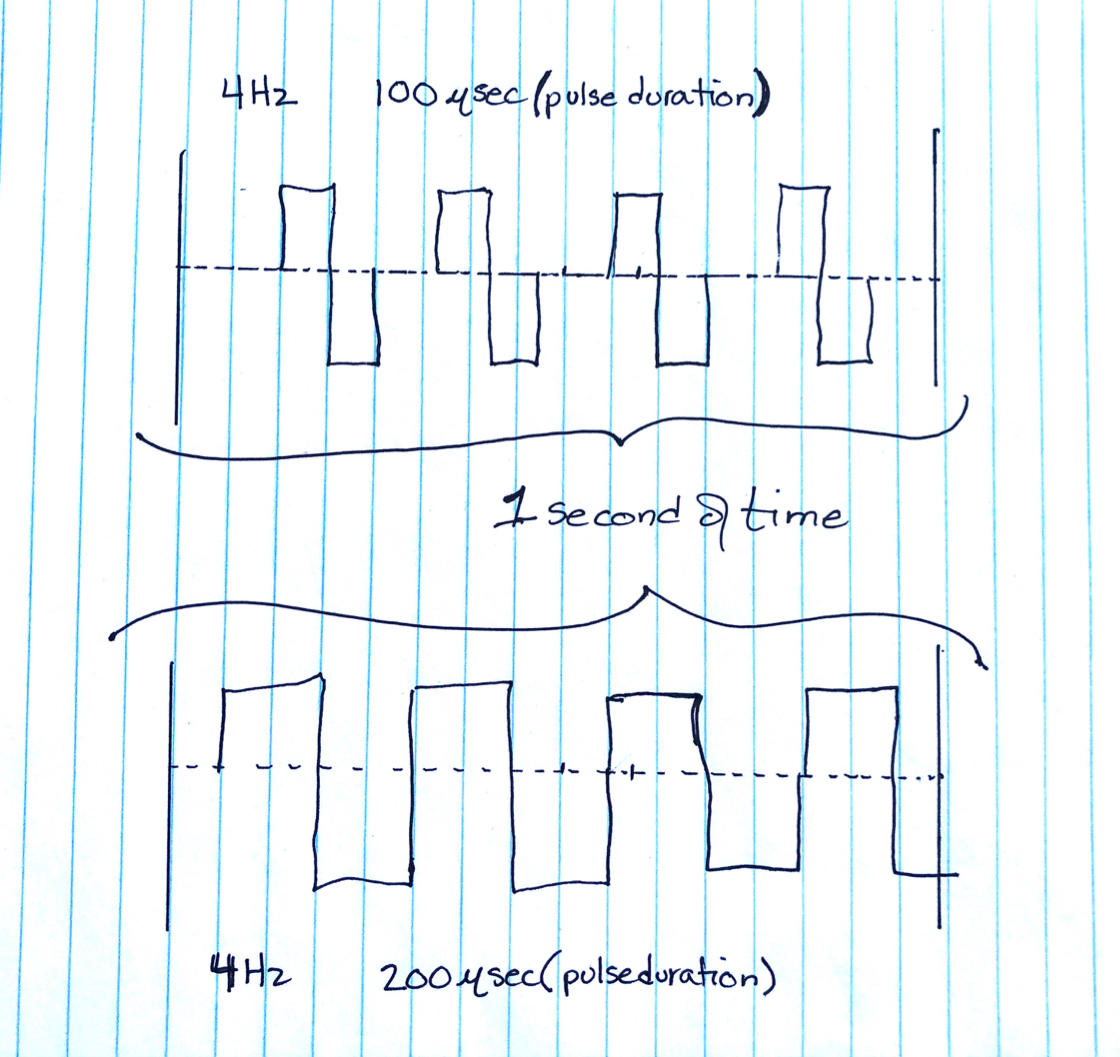Laurie's Blogs.
Jan 2020
How wide is your pulse? E-stim settings
So, while looking up a wee factoid (milliseconds versus microseconds) in regards to pulse duration on an e-stim, I came across an interesting paper.
Gorgey AS & Dudley GA. The role of pulse duration and stimulation duration in maximizing the normalized torque during neuromuscular electrical stimulation. J Orthop Sports Phys Ther. 2008, 38(8): 508-516.
So, the premise of the study was to see whether a protocol of longer NMES duration was better than a protocol of short duration, but longer pulse duration. They measured torque as well as MRI evaluations of cross sectional area of each of the stimulated muscles (before and immediately after each protocol).
Group A had e-stim applied to the quadriceps muscles at 100 Hz, 450 microsecond pulses (pulse width) for 5 minutes, at a 3-seconds-on 3-seconds-off duty cycle. Group B’s protocol saw the application to the quadriceps at 60 Hz, 250 microsecond pulses (pulse width) for 5 minutes in a 10-seconds-on 20-seconds-off. Amplitude was the same in both groups.
Now before we get into the results let’s talk about pulse duration. I admit that this wasn’t an aspect of e-stim that I understood very well as a physiotherapist, until I had to teach it to others. Only then, did I have to really wrap my brain around what it meant. So, firstly, pulse duration, phase duration, and pulse width area all the same thing. I like to simplify it as ‘how wide’ is the electrical current? I made a diagram to explain (see below).

So, if you choose the setting of 4Hz (which is the same as saying 4 pulses per second), then you are delivering 4 ‘zaps’ of current every second. Now your pulse width is how wide those pulses are, or if you prefer, how long each pulse lasts.
A pulse width of 200 microseconds is twice the width of 100 microseconds. At 4Hz, you would still get 4 ‘zaps’ per second, but you’d get ‘more bang for your buck’ with 200 microseconds – longer exposure to the current essentially, and thusly a stronger muscle contraction. Subjectively 50-microsecond pulse width is more comfortable than 300, but research tells us that 300 microseconds should recruit more muscle fibres.
Back to the paper. What did they find?
Musculoskeletal cross sectional area was equally activated with both protocols. “The longer pulse duration in protocol A elicited 22% greater torque output than that of protocol B (P<.05). After considering the activated area in both protocols, the normalized torque with protocol A was 38% greater than that with protocol B (P<.05). Torque time integral was 21% greater with protocol A (P=.029). Protocol B failed to maintain torque at the start and the end of the 10-second activation.”
So, in conclusion, “a longer stimulation duration (i.e. 10 seconds versus 3 seconds) fails to offset the effect of short pulse duration and could not maintain performance over repeated contractions. Longer pulse duration evokes greater peak torque and normalized torque compared to short pulse. Therefore, clinicians are encouraged to reconsider the use of pulse duration and stimulation duration when they are designing protocols to augment muscle strength.”
And this is why it’s important to understand the value of pulse width when selecting values on your NMES / E-stim unit. I hope this helps, and happy zapping this week!
Cheers! Laurie


